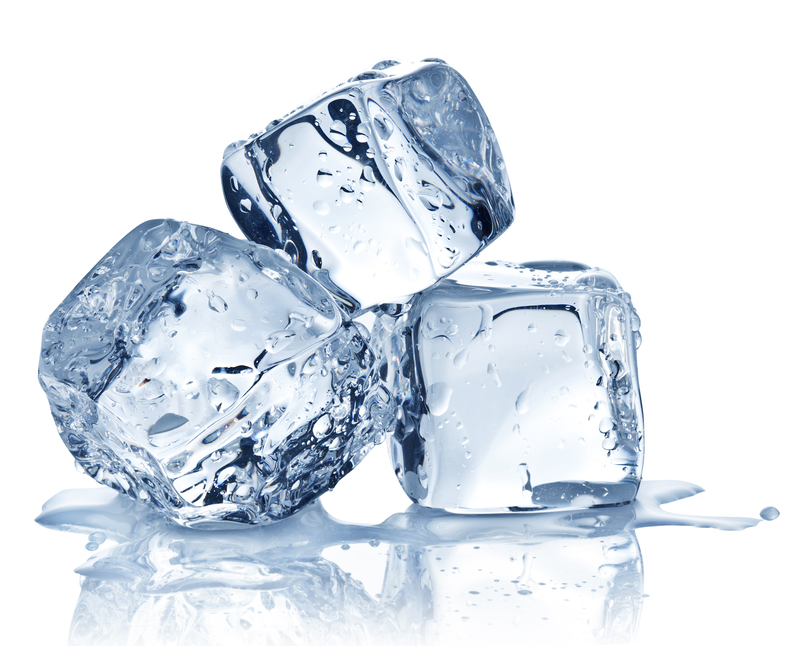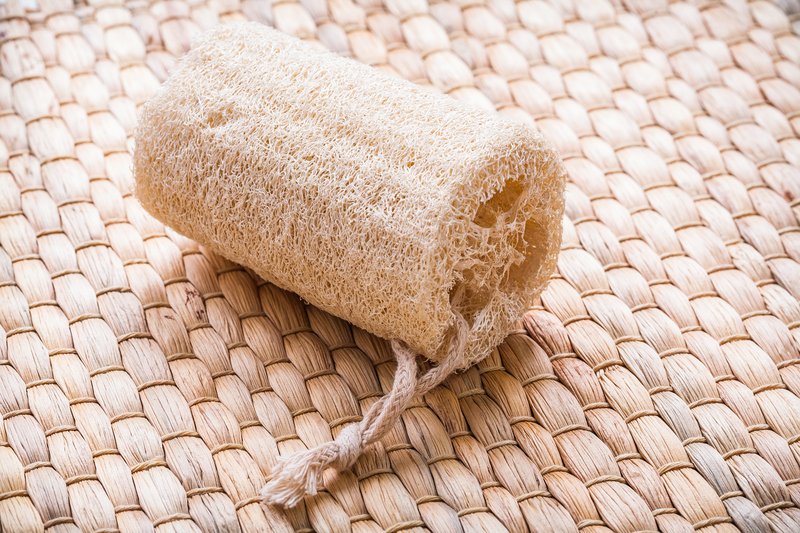Cut Through Grease with Ease: A Guide to Pristine Enamel Oven Trays
Posted on 26/08/2025
Cut Through Grease with Ease: A Guide to Pristine Enamel Oven Trays
Keeping your kitchen in top shape means paying attention to every detail--even the ones you might not always see. Enamel oven trays are essential tools in any home cook's arsenal, but over time, they can collect layers of tough grease and grime. If you've struggled to restore your oven trays to their former gleam, this comprehensive guide will teach you how to cut through grease with ease and achieve immaculately clean, pristine enamel baking trays every time.
Why Clean Enamel Oven Trays Matter
Your enamel oven trays are vital for everything from roasting succulent meats to baking crispy vegetables. However, grease build-up isn't just unsightly--it can affect the flavor and hygiene of your food, diminish oven efficiency, and reduce the life of your cookware. When you neglect cleaning, burnt-on residue and greasy layers can become stubborn, requiring far greater effort to restore their shine.
- Food safety: Leftover grease can harbor bacteria and impart unwanted flavors to your food.
- Performance: Clean enamel trays heat more evenly, ensuring better cooking results.
- Longevity: Proper maintenance extends the life of your oven trays, making them a lasting kitchen investment.
Let's dive deeper into the nature of enamel oven pans, what makes them unique, and how to keep them spotless with minimal effort.

Understanding Enamel Oven Trays: Structure and Benefits
Enamel oven trays are crafted from metal--typically steel or cast iron--coated with a glassy enamel glaze. This coating provides several advantages:
- Non-porous surface: Repels stains and prevents food particles from embedding in the metal.
- Easy to clean: Compared to raw metal, enamel trays resist corrosion and burnt-on food is less likely to stick.
- Attractive and durable: The shiny, smooth finish enhances appearance and resists scratches (with proper care).
However, improper cleaning methods or abrasive tools can erode the enamel coating, exposing metal beneath to rust and wear. To keep your enamel baking trays in pristine condition, choosing the right cleaning techniques is crucial.
Common Causes of Stubborn Grease on Oven Trays
Even the tidiest cooks occasionally face grease build-up. But what causes that stubborn, hard-to-remove residue?
- High temperatures: Frequent roasting at high heat can bake on oils and sugars, turning them into a blackened crust.
- Neglected cleaning: Skipping regular maintenance allows layers of grime to accumulate, compounding the problem.
- Incorrect products: Relying on mild cleaners may not break down caked-on fats, while harsh chemicals risk damaging enamel.
- Spillovers: Sauces, marinades, and oils can overflow or drip, burning onto the tray surface.
The solution lies in a blend of fast-acting degreasers, safe soaking methods, and preventive strategies--all tailored to enamel surfaces.
The Proven Method: How to Cut Through Grease with Ease on Enamel Oven Pans
Forget back-breaking scrubbing or endless soaking. Here's a step-by-step strategy to restore your enamel oven trays to their original luster:
1. Initial Rinse and Debris Removal
- While the tray is still warm (not hot), rinse under hot water to soften surface grease.
- Use a soft plastic spatula or wooden scraper to gently lift off large pieces of food.
- Avoid metal utensils to preserve the enamel coating.
2. Pre-Soak with a Grease-Cutting Solution
- Fill your sink with very hot water (but not boiling, to avoid shocking the enamel).
- Add a few drops of strong dish soap--look for labels like "grease-fighting" or "degreaser."
- Submerge the tray and let it soak for 15-30 minutes.
3. Apply a Baking Soda Paste
- For baked-on grease, sprinkle the surface with baking soda.
- Add a small amount of water to form a thick paste.
- Let the paste sit for 10-20 minutes, loosening residue without scratching.
4. Gentle Scrubbing
- Use a soft sponge, nylon brush, or a non-abrasive scrubbing pad.
- Work in circular motions, focusing on the greasiest spots.
- Rinse with hot water, checking for remaining stains.
5. Tackle Stubborn Patches
- Stubborn areas may benefit from a second baking soda paste or a splash of white vinegar for extra power.
- Allow fizzing to subside, then scrub again with a soft pad.
6. Final Rinse and Dry
- Wash the whole tray with mild soap and plenty of hot water.
- Dry immediately with a soft towel to prevent water spots or rust on exposed edges.
_Pro Tip: Never use abrasive steel wool, harsh powders, or scouring pads, as these can scratch and deteriorate the enamel finish, making future cleanings harder._
The Best Cleaners for Enamel Oven Trays: What to Use (And What to Avoid)
To safely cut through grease on enamel oven trays, select cleaning products that attack fat molecules without damaging the delicate surface. Here are the top recommendations:
- Dish soap with degreasing action: Most residues come off with a good soak and high-quality detergent.
- Baking soda: Safe, gentle, and effective for stubborn stains.
- White vinegar: Use sparingly, as excessive acid can wear enamel. It's best combined with baking soda for short-term application.
What to Avoid
- Abrasive powders or steel wool: These scratch and dull the glossy surface.
- Highly acidic or alkaline solutions: Prolonged exposure breaks down enamel integrity.
- Harsh chemical oven cleaners: Unless specifically labeled as enamel-safe, these may cause discoloration or chipping.
Always check the manufacturer's instructions if available, and test new cleaners on a small area first.
Eco-Friendly Ways to Clean Greasy Enamel Oven Trays
Looking for environmentally conscious techniques? Many natural grease removers can deliver sparkling results:
- Lemon and Baking Soda: Squeeze the juice of a lemon over your tray, then sprinkle with baking soda. Let it fizz for 10 minutes, then wipe clean.
- Salt Scrub: Use coarse salt with a damp cloth for gentle abrasion. This is excellent for greasy corners and works as a deodorizer.
- Steam Cleaning: Place the enamel tray in the oven with a bowl of water and heat for 20 minutes at 200?C (392?F). The steam loosens baked-on grime, making it easy to wipe away with a cloth.
These eco-friendly methods are safe, effective, and leave your kitchen free of harsh chemical residues.
How to Prevent Grease Build-Up on Enamel Baking Trays
Prevention is always easier than cure. Adopt these smart habits to keep enamel trays sparkling clean with less effort:
- Line before use: Use parchment paper, silicone mats, or aluminum foil to catch drips and reduce direct contact with food.
- Immediate cleaning: Clean your tray while it's still warm--grease comes off more easily before cooling and hardening.
- Regular maintenance: Don't wait until stains accumulate. A quick wipe after each use prevents layering.
- Oil sparingly: Too much oil can pool and burn, creating tough spots. Use sprayers for more even distribution.
By incorporating these methods, you can minimize grease build-up and make deep cleaning sessions less frequent and less laborious.
Dealing with Persistent Odors and Stains on Enamel Trays
Sometimes, even after cutting through grease, persistent odors or discoloration can linger. Here's how to tackle them:
- Oven-bake cleaning: Sprinkle the tray with baking soda, then heat it in the oven at 120?C (250?F) for 15 minutes. Let cool, then wash as usual.
- Hydrogen peroxide paste: For stubborn stains, make a paste of baking soda and hydrogen peroxide. Spread on stains, leave for 10 minutes, and wipe off with a damp cloth.
- Lemon water soak: Fill the tray with hot water and add sliced lemons. Let soak overnight for a fresh, clean scent.
_If deep-set stains remain despite your best efforts, they may be permanent--but the tray is still safe for use if there's no chipping or exposed metal._
Knowing When to Replace: Signs of Wear and Tear
The best cleaning methods can only do so much if your enamel bakeware is past its prime. Watch for these signs that it's time for an upgrade:
- Chipped or flaking enamel: Exposes the underlying metal to rust and contamination.
- Discoloration that won't wash away: May be a sign of permanent enamel breakdown.
- Warping or dents: Can cause uneven cooking and make cleaning more difficult.
A well-cared-for enamel tray can last for many years. Replace trays when significant damage occurs to maintain the highest standards of food safety and quality.

FAQs: Cut Through Grease with Ease on Enamel Oven Trays
- Can I use a dishwasher for my enamel oven trays?
Many enamel trays are dishwasher safe, but repeated cycles may dull the finish over time. Hand washing ensures a longer life. - Is it safe to use vinegar on enamel trays?
Yes, but only for short contact and in moderation. Excessive use can wear down the enamel surface. - What if the tray is sticky even after washing?
Try an additional round with baking soda paste and hot water. Persistent stickiness may mean it's time for a deep clean or, in rare cases, replacement.
Key Takeaways: Ensuring Your Enamel Oven Trays Stay Pristine
- Act quickly: Clean up grease and food debris as soon as possible for easier removal.
- Use gentle, grease-cutting agents: Hot water, baking soda, and mild degreasers are your best friends.
- Avoid abrasives: Protect the enamel finish for lasting shine and performance.
- Practice prevention: Line trays and clean after every use for best results.
Cutting through grease with ease on enamel oven trays doesn't have to feel like a chore. With the right tools, techniques, and a little preventative care, your enamel bakeware will provide years of culinary delight--always looking as pristine as the day you bought it.
Make this guide your go-to manual for tackling tough oven tray grease. Enjoy effortless clean-up, brilliant shine, and better-tasting food, every time you cook!




